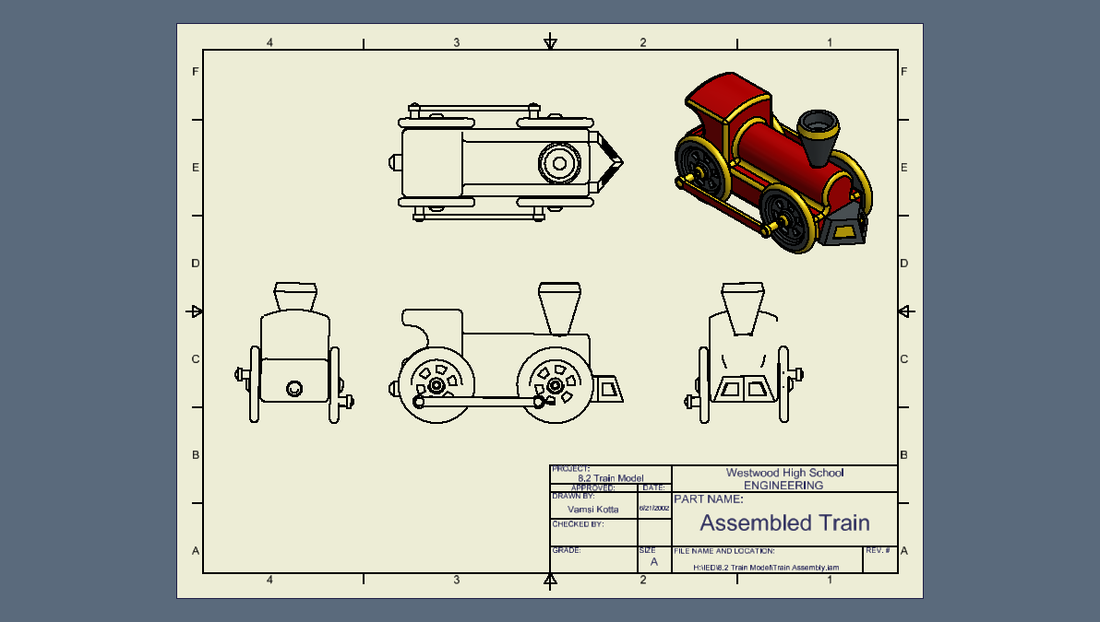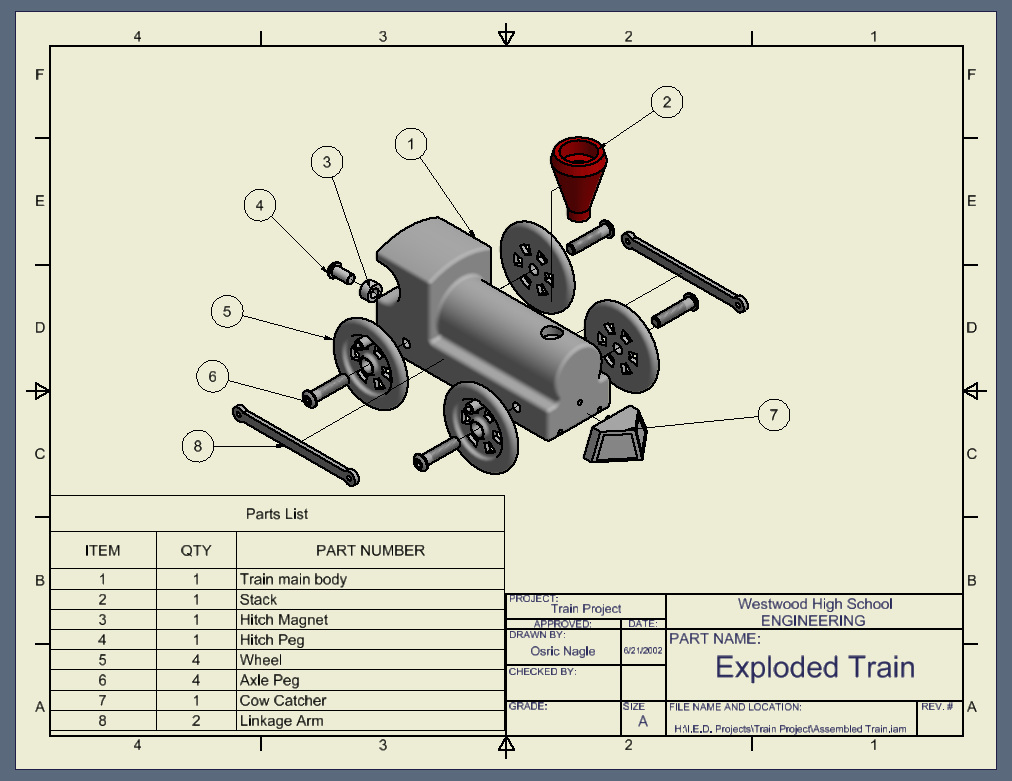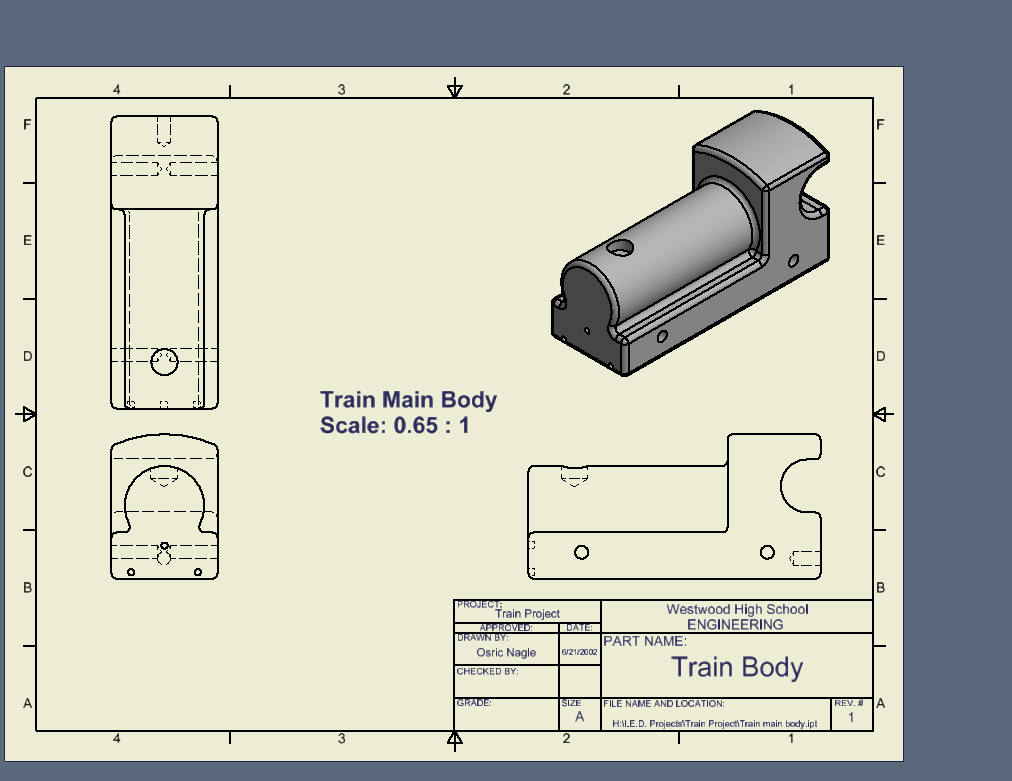Mechanical drawings should reflect the rigid line control of a mechanically produced drawing. The basic drawing standards and conventions are the same regardless of what design tool you use to make the drawings.

Miniature Train Model Vamsi Kotta
Drawings are composed of different line conventions because there are many different types of objects and each line convention is useful for accuratelyefficiently conveying information for a specific or broad range of shapesfeatures.

. Start studying Line Conventions. The two types of conventions that came into being after 1830 were. These are different in the way the drawing is.
Mr Richmonds Help pages. Line characteristics such as widths breaks in. Lines are used to show dimensions and hidden surfaces and to indicate centers.
Explain what basic drawing conventions are used and why there needs to be different types of drawings. That all visible edges are shown by a line and that we assume those edges progress away from us to form faces which are normally flat and at right-angles. In the construction industry all drawings are carried out to a British Standard referred to as BS 1192.
Lines mark the boundaries edges and intersection of surfaces. Chapter will review the basic symbols and conventions used in both types of drawings. These standards relate to technical drawing more precise than freehand sketching use these standards as a guide when sketching.
Drawings are composed of different line conventions in order to allow certain areas to be seen such as holes and how deep they go in. The development of good detail drawings is a real engineering accomplishment and art. Up to 24 cash back 1.
The thickness of the lines must be chosen according to the type and size of the drawing from any of the six groups given in Table 1. Why are drawings composed of different line conventions. Standards and Conventions.
What is the purpose of an auxiliary view. Drawings are composed of different line conventions because there are many different types of objects and each line convention is useful for accuratelyefficiently conveying information for a specific or broad range of shapesfeatures. Why are symbols used instead of words to identify hole types.
In learning drafting we will approach it from the perspective of manual drafting. Engineering Drawing Dimensioning for Coursework projects in Design technology. Technical drawing relies on a number of agreed assumptions.
What is the purpose of a sectional view. For example in Figure 5-16 a graphic symbol with an arrow drawn on a. Standards in all areas keep changing so they are not completely standard.
Alex Wheeler drawings circuit and wiring diagrams block and schematic diagrams There are several different types of drawing conventions the usual one to be used is orthographic drawings which represents a three dimensional drawing in two dimensions this can be shown in two different ways first and third angle projection. Obviously if the same kind of line is used to show these variations a drawing becomes a meaningless collection of lines. Each line might even need a small adjustment so you dont want to.
Complex object sketches may require different line types to overlap line. The purpose of a sectional view is to allow for a more detailed and close up view of a specific area of a part. Up to 24 cash back Why are drawings composed of different line conventions.
Drawing sectioning are essential means of communicating ideas. If the drawing is made without either instruments or CAD it is called a freehand sketch. British Standards 308 7308.
What is the purpose of a sectional view. Different symbols are used to show different working equipment like in wiring diagrams and drawings so it makes it easier to understand and you can show how they interact with different types of equipment the most common symbols used are health and safety symbols to show what safety equipment needs to be used in an area such as PPE being worn by using. Drawings are composed of different line conventions because there are many different types of objects and each line convention is useful for accuratelyefficiently conveying information for a specific or broad range of shapesfeatures.
The Mechanical Drawing Conventions ClipArt gallery offers 48 illustrations of the conventions used to represent different materials in mechanical drawing. Why are drawings composed of different line conventions. Examples in this gallery include the symbols for cast iron wood brass copper glass and more.
Every drawing is composed of lines. Learn vocabulary terms and more with flashcards games and other study tools. These conventions are fairly standard throughout the industry and are used to reduce the drawing time and space needed to convey information.
There is no one line that is used today that has the function of. For general engineering drawings the types of lines recommended by the Bureau of Indian Standards shown in table 2 must be used. That all views are of the same object and only that object but from different viewpoints and that all views are the same scale.
Why are drawings composed of different line conventions. This ensures that every drawing produced within Ireland and the UK relating to a building project will follow the same standard principles. Construction drawings communicate how something is built by showing specific assemblies and by employing architectural drawing conventions.
Drawings are composed of different line conventions because not all the lines are going to be the same. Students should develop a stylized drawing technique that conforms to the rigid conventions of line drafting with added variations of artistic techniques to produce a very individualized finished. Line Types see also ASME Y142M When you are preparing drawings you will use different types of lines to convey information.
In the construction industry all drawings are carried out to a British Standard referred to as BS 1192.
Line Conventions Manufacturinget Org
Line Conventions Manufacturinget Org

Model Train Engineering Domain




0 comments
Post a Comment